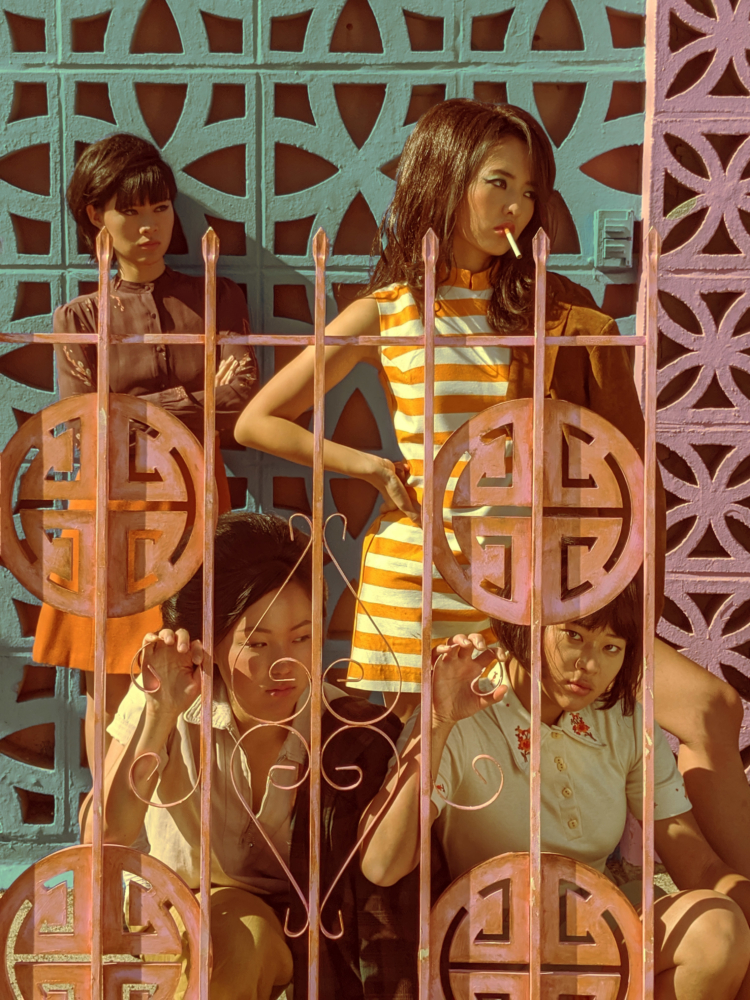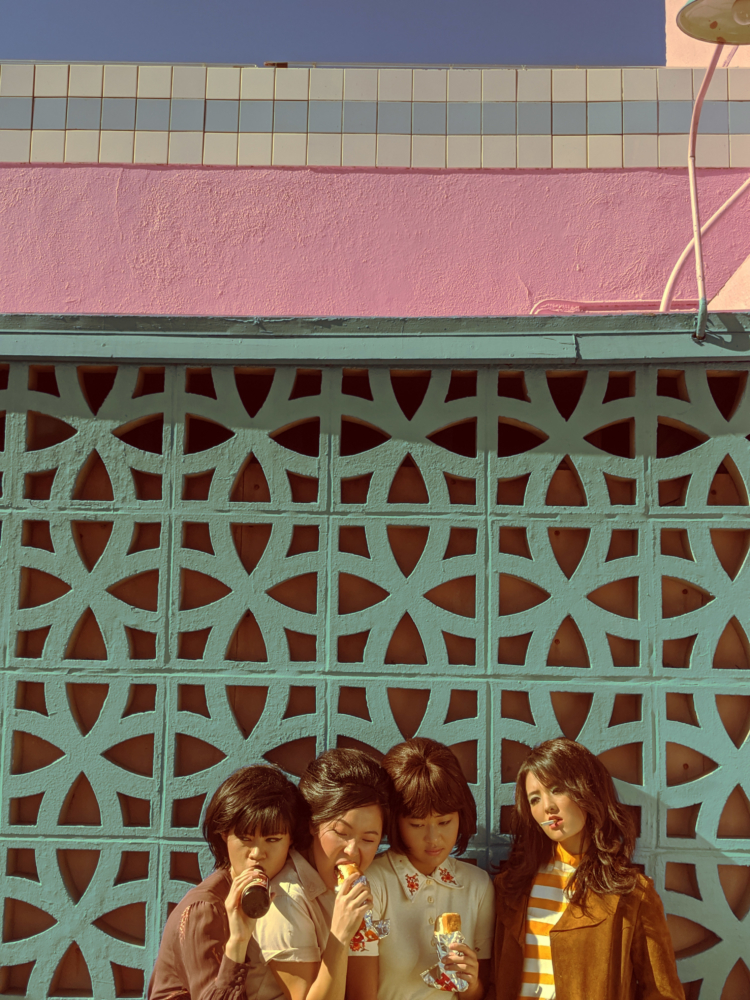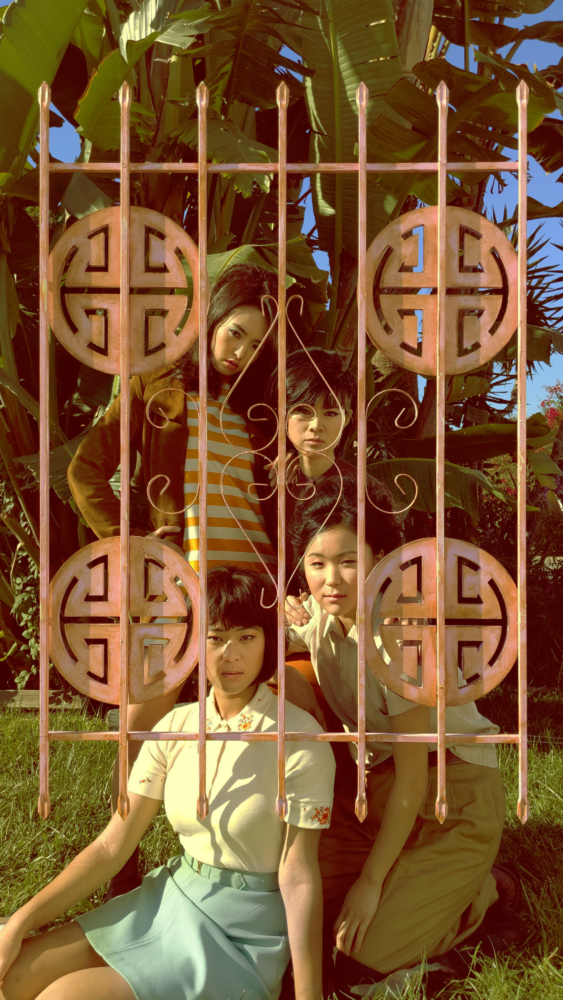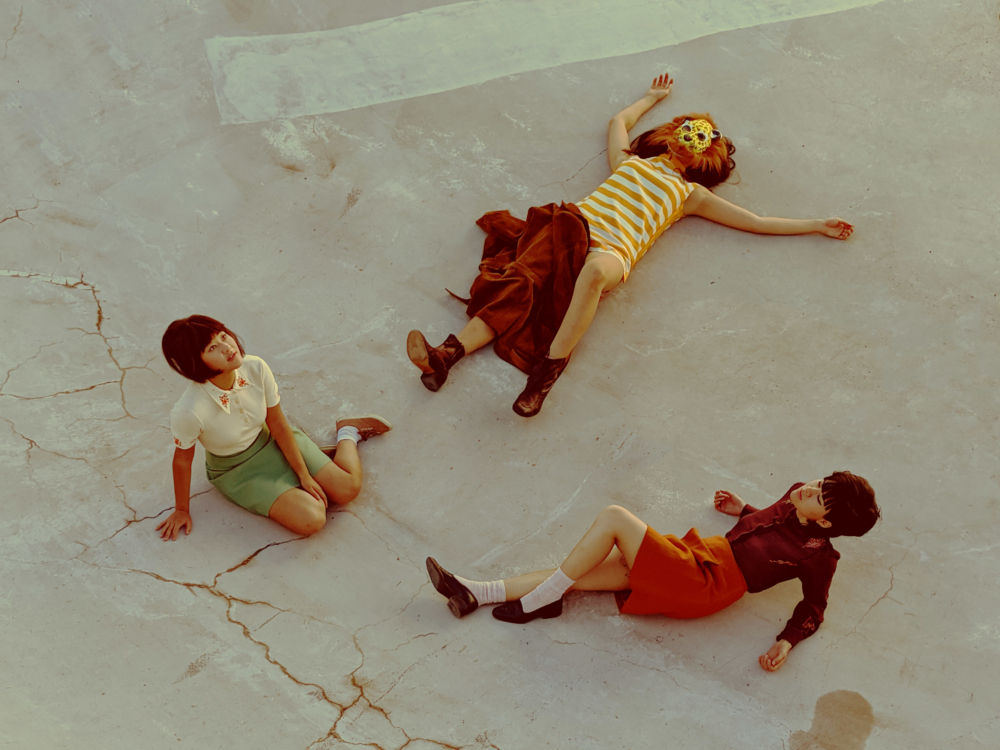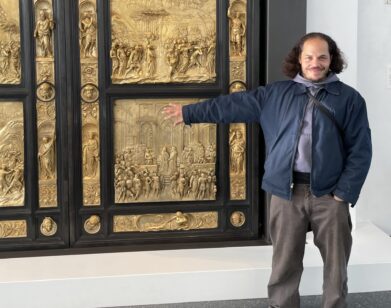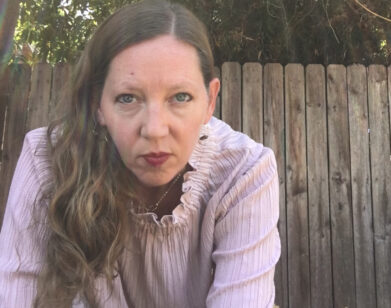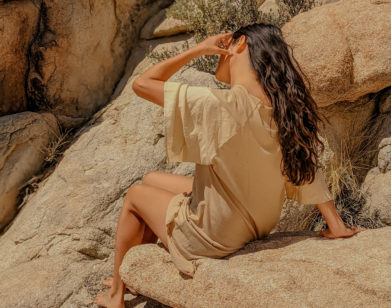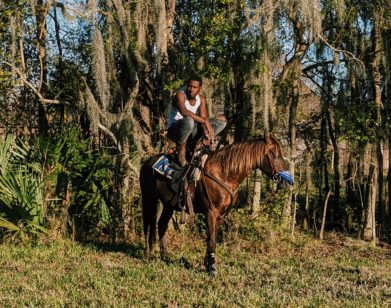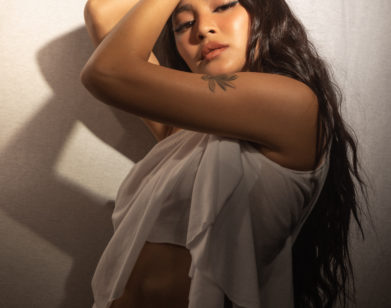Andrew Thomas Huang Wants to Make a Movie Before the World Ends
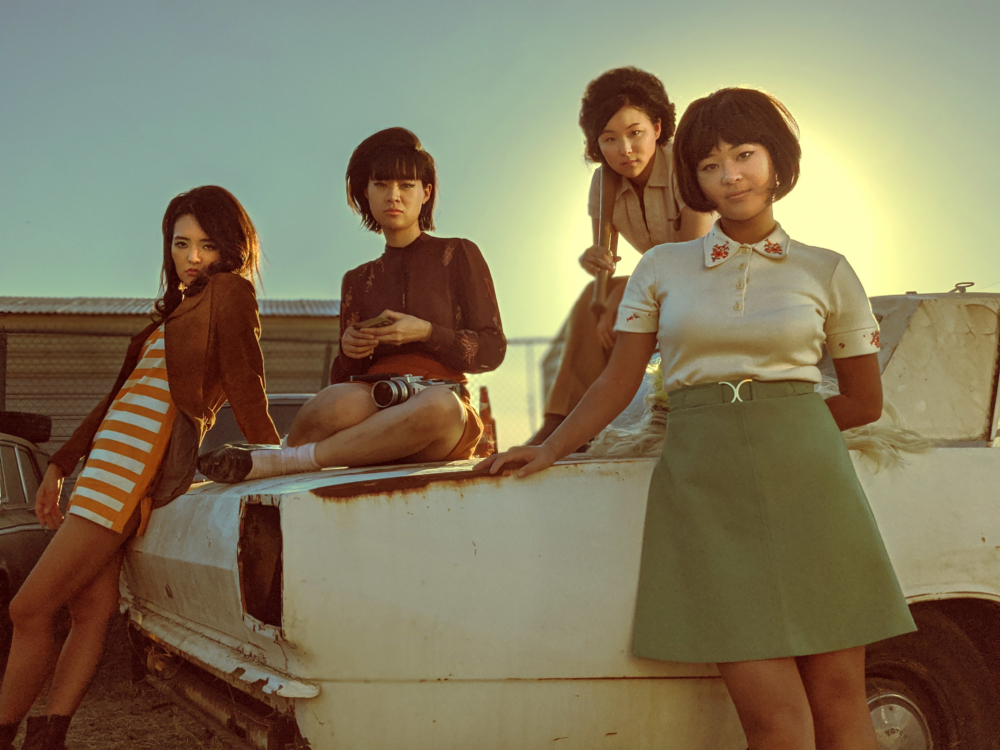
Still from Lily Chan & the Doom Girls written & directed by Andrew Thomas Huang. Starring actresses (left to right) Hojo Shin, Linda Ngo, Michelle Park and Mimi Lu.
The filmmaker Andrew Thomas Huang is, simply put, a visual person. He grew up watching things like The Muppets and Labyrinth, and made his way into filmmaking via drawing, painting, and puppetry. After working on mostly commercial projects (“Lawn mower commercials or whatever”), Huang pivoted towards more experimental work with the short film “Solipsist,” grabbing the attention of Thom Yorke and Björk alike—the latter quickly enlisted Huang to direct the video for her song “Mutual Core” in 2012, weeks after “Solipsist” appeared online. Since then, Huang has directed three more videos for Björk, plus some for Perfume Genius, Kelela, serpentwithfeet, and most recently, for the FKA twigs song “Cellophane,” which is nominated for Best Music Video at this year’s Grammy Awards. Now, with the help of Google and LENS’s artist incubator program Creator Labs, Huang has set his sights on a long-simmering story about a young girl, a tiger, and a fatalistic girl gang in 1960s Los Angeles called “Lily Chan and The Doom Girls.” The teaser for the film and its accompanying portraits are a dreamy time capsule of aimless adolescence, but they’re only a slice of what’s to come—”just a taste of what will be [a] full film,” Huang says. Like fellow Creator Labs alumni MaryV Benoit and Quil Lemons, Huang aims to elevate underrepresented voices through his work, particularly those of Asian-Americans, whose stories are often sidelined in films, if not ignored completely. Interview caught up with Huang to learn more about the inspiration behind the project, how he learned to say “no,” and that time Björk called him while he was grocery shopping.
———
“I just want to make a movie before the world ends. And I wish I was exaggerating the latter part. I want to make a movie before I die—just one. The story is about a young, repressed Chinese-American girl in the 1960s and she discovers a tiger lurking in her attic. When she can’t conform to her mother’s social pressures and ideals, the girl has to learn that the tiger upstairs is the thing that will set her free. It’s a coming-of-age fantasy along the lines of Donnie Darko or Beasts of the Southern Wild, where, ‘spooky thing visits restless teenager at night, and encourages them to tear the world down.’ ‘Lily Chan and the Doom Girls’ is just the subplot. These girls are the catalysts that encourage Lily to come out of her shell to rebel against her mother. And there’s a tiger.
“I’ve seen my parents in photographs in the ‘60s, with beehive hair and cruise culture and whatnot, but we haven’t yet seen Asian-Americans in that time and place onscreen yet. I feel like Asian-American or immigrant stories are often limited to social realism, and are always given these kitchen sink, struggling parent narratives or something. All the fantasy and the highly visual stuff is usually reserved for big Hollywood productions, or things that don’t seem to include us. My goal is to tell an Asian-American immigrant story, but give it the same visual flair that I give in other arenas.”
———
“I grew up watching Terry Gilliam movies and Tim Burton’s early work. I’m also a huge Sally Potter fan. I would say my favorite contemporary filmmaker is Apichatpong Weerasethakul. I’m really in awe of people that can create a dreamy space with very little. I think that’s because I’ve spent so much effort trying to make dreamy things with expensive visual effects. The truth is, I’m more interested, on an economic level, in how to do that more poetically with just performers, a prop, and a cool space. Truly, the most affordable and effective thing I can do is put girls in wigs. Styling is the statement. I did a video with Kelela, and her Creative Director, Mischa Notcutt, is frankly one of the most talented stylists I’ve ever worked with. As someone who comes from post-production, I was so focused on what you do after you’ve shot it. But when you think of any pop icon, you think about what they wore and the character that they’re portraying. That’s why for this I was like, okay, that’s all we need—just a bomb outfit and cool hair.”
———
“Björk called me while I was in the middle of grocery shopping. Well, her manager called me, and then I got an email from her simultaneously while I was out at the Pavilions. And when I got in the car, I just wept in the parking lot. Before that, I would do whatever—shitty baby food commercials or something, then I’d turn around and put my paycheck into a music video. And that repeated over and over again. I was like, ‘Where is this going?’ I had to stop everything and invest in myself, because I really felt like I was giving my manna away to other people, and I needed to use it for myself until I made it. The universe really can give back to you if you ask. All that grueling work that I maybe didn’t appreciate still was worth it. Because there’s no other way I could have arrived at that point.”
———
“What I’ve learned is that no matter what you’re trying to make, if it involves multiple people, you have to become the bowl holding a space for people where they feel nourished to contribute their own talent, but also be specific in the worlds you are generating for them to explore in. You have to really become kind of a channel—where you put on music or you soak them in things that are currently driving you. You have to become a 360° ringleader that really honors and respects what they give, and either inspire them to go further, or melt their defenses to unlock things that they hadn’t thought of. Also, just leading by showing—I try and do a lot of sketches and drawings to show exactly what I have in mind. You have to live it, and really embody what you’re trying to put onscreen.”
———
“I think I regret all the moments I’ve self-doubted. I wish that I had made some of my most important decisions sooner, like to focus on my own work. I think there is always this idea that, commercially, I should compromise. ‘Oh, I should make the economically sound choice because that’s more responsible, instead of doing the thing that is riskier and weirder, but maybe more instinctual.’ I think if I had done the latter sooner, and more boldly and bravely, maybe I would be, I don’t know, ahead. But even that sounds kind of funny. I would just tell myself not to doubt myself so much—to keep going. And that saying no is very important. Actually, the best advice I’ve heard has been, ‘What you say no to is more important than what you say yes to.’ And I wish someone had just told me that a little sooner. I think we’re pressed to say yes all the time because we’re afraid of missing out, or afraid of crossing people or disappointing them. I’m a people pleaser, so I’m always afraid that they won’t ever come back if I say no. But the actual truth is that people respect you more if you say no.”

